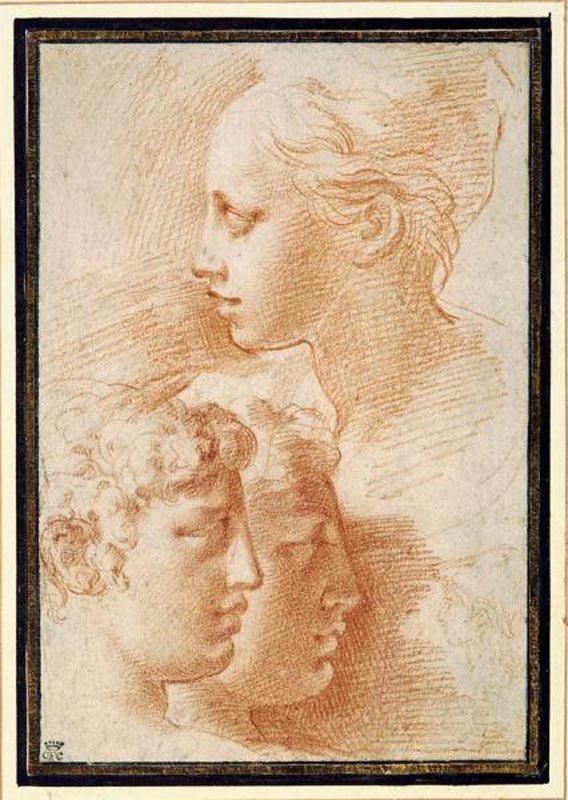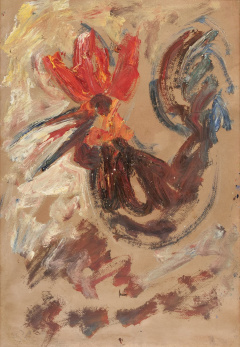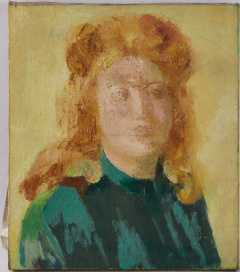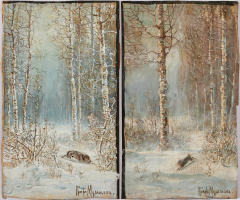Exhibition of Italian figure in the Pushkin Museum. Pushkin
GMII, December 1, 2012 - January 27, 2013
Main Building, St. . Boston, 12
The exhibition "Five Centuries of Italian design. From the collection of the Pushkin Museum. A. S.Pushkina "presents about 250 works famous artists Italian school early XVI - XX century end . Her organization is linked to the publication of three volumes of scientific catalog of the collection of Italian drawing in the collection of the Pushkin Museum. A. S.Pushkina composed Marina Ivanovna de Mayo, a leading researcher in the Department schedules.
impressive exhibition, housed in White Hall, on the colonnade and in Hall № 20, is dedicated to the most flexible form of art. That figure responds with increased sensitivity to the slightest changes in the artistic perception of the world era: changing styles of drawing, change forms, techniques and materials. He is the most objective witness of his time. However, drawing the most intimate area of creativity. Small pieces of paper, often faded or yellowed from time to store not only touch of the hand of the artist, the memory of his skill and virtuosity various Drawing techniques - they bring us trembling movement of his thought, the exciting process of birth conception, breadth of creative aspirations. With this figures reveal a rare opportunity to see the artistic era from the inside, to feel her inner rhythm, dynamics, to feel a variety of types of drawings atmosphere of a period in the history of art in its formation and development.
A collection of Italian drawings Pushkin Museum. Pushkin, established in the late XIX - early XX century and now numbering over 3000 sheets, is a unique opportunity to get acquainted with the history of graphic art in Italy.
The earliest Italian figure in the museum's collection is a drawing by Mantegna circle , is associated with the artistic traditions of the late Quattrocento.
close to it in the runtime sided figure Vittore Carpaccio - one of the masterpieces of the collection Pushkin Museum. Pushkin . This sheet is made about 1505, opens a wide range of issues that interested the artist of the Renaissance. At the same time it demonstrates the specific characteristics of art school in Venice with its characteristic principle picturesque, search the interaction of light, color and space.
for Italian art important concept of "local school" : it defines the identity graphic style of an art center. In the XVI century the leading role in Italy belonged to the Florentine-Roman school, "setter" main directions of art of this time, one of which was mannerism. While maintaining continuity with the Renaissance tradition, drawing on the rich heritage of the classics of the Renaissance, such Artists like Giulio Romano and Perino del Vaga, Parmigianino and Rosso Fiorentino, Francesco Salviati and Taddeo Zuccaro, enriched Italian design new features.
One of the peaks of development reaches Italian Mannerism in creativity Taddeo Zuccaro. Graphic legacy of this great painter shown at the exhibition by several first-rate sheets. Taddeo tradition in the years developed his younger brother Federico Zuccaro, the recognized head of the late Roman Mannerism. He was the first among the masters of the late XVI century, who systematically started using an effective combination of red and black chalk, later subsumed into general use, as can be seen from the example sheet on display.
Unlike the masters of Roman Tuscan circle, Mannerists Northern Italy tended to create an elegant, sophisticated style graphics. One of the most striking manifestations of this art was the work of Francesco Parmigianino . His drawings, endearing poetic mood and artistry reveal multifaceted talent of the artist - the master of famous altarpiece, monumental fresco paintings, a portrait of the founder of the Italian etchings. Parmigianino impact on his contemporaries was enormous. His faithful follower Jacopo Bertoyya with impeccable balance sheet located in the space part of a complex pattern, achieving a broad sense, and smooth movement through to dissolve the human figure. Influenced by Parmigianino in figure another master of northern Italy, Giulio Campi , dramatic pathos scene «Crucifixion» is revealed in penetrating monumental composition vortex linear rhythm.
| Madonna and Child in clouds Source: |  Francesco Mazzola Parmigianino Francesco Mazzola Parmigianino Sheet with sketches heads Source: |
in special shape open the way for peace drawings XVI century Venetian artists - Paolo Veronese, Domenico Campagnola, Andrea Schiavone, Paolo Farinata, Palma the Younger. Venice, whose art is the most important place belonged coloristic quest, has developed a unique, different from other schools in Italy picture type. Filled with a pen on yellowed paper, a little shaky, as if melting into quivering motion chiaroscuro «Feast in the House of Simon the Pharisee," Veronese as it translates into the language of the picture color system of the future picture, providing a graphical prototype painting.
XVII Century contrasted Mannerism appeal to nature, the art of antiquity and the Renaissance tradition.
of Bologna drawings beginning of the XVII century, stored The museum's collection, and is closely associated with the traditions of education in the studio Carracci, special attention should be wonderful list Guido Rennie with sketches mule on the front and Stude naked male torso on the back. Marked by great skill and agility performance, it clearly demonstrates the important role that painting from life in the artistic method of one of the founders of academic painting.
more attractive to collectors always had Guercino drawings , which explains the presence in the museum collection of sheets of this wonderful Bolognese painter and draftsman. In the works of Guercino clearly expressed a new iconic image of Italian principle XVII century - the principle of picturesqueness, conceptual, freedom, when the most important means of expression rather than the line becomes slick.
This stylistic trend has individual interpretation in the work of such various artists Baroque, both working in Rome Gian Lorenzo Bernini, the Florentine Volterrano, Genoese Giovanni Benedetto Castiglione and Domenico Piola.
 Ottawa LEONI Ottawa LEONI Portrait of a Young Lady Source: |
continued his line of "beautiful" picture gets in XVIII century , when the art of drawing is entering a period of the highest artistry. Italy's leading school of this time is considered to be in Venice, is going through a golden age of development. Collection of Venetian paintings of the XVIII century - the most solid and richest part of the graphic collection of the museum within the Italian school. It includes more than 250 pages, combining the work of major Venetian painters of the time - Giovanni Battista and Domenico Tiepolo, Guardi family, Giovanni Antonio Pellegrini, Gaspare Ditsiani, Francesco Fontebasso and others. Honed virtuosity and particular ease of execution, exquisite decorative forms, subtle elegance and inspiration images - the characteristics of the graphic style of the XVIII century - turn pictures Venetian masters as independent works of art.
interesting document of the Roman artistic life XVIII century are cartoons Pierre Leone Getstsi. In addition to the individual sheets of the artist, in the museum store album of his sketches, including a 536-sheet. This is mainly portraits and caricatures depicting the clergy, the clergy, ambassadors of foreign powers, flood Rome tourists and artists, fellow Getstsi profession.
Italian design of the XIX and XX centuries in Pushkin inferior in quantity and quality of the collection of old masters, as the Russian collectors of this period in the history of Italian art was interested enough. Nevertheless, some interesting trends can be traced on the material the museum collection. First of all, in terms of romanticism that has settled in the art of Italy in the 1820s and 60s, highlight only in the collections of the country sheet Francesco Ayetsa, one of the leading masters this area in Northern Italy. But the most striking and undeniable manifestation of Romanticism in Italian art of the XIX century is considered to landscape painting, in which the individual and lyrical experience of the subject represented by the artist is most consistent with the concept of art Romanticism. Here, the most important role belongs to the Neapolitan school of landscape Posillipo (1820-1860), formed in the vicinity of Naples around Dutch painter Pitloo, was the first in southern Italy, opened the possibility of plein air painting. In the collection of the Pushkin Museum. Pushkin's works of the masters Posillipo School are well represented, and the exhibition shows the lists of two brothers Gigante (Giacinto and Achille) and Achille Vyanelli.
| Naples by Konokki Source: |
earliest works of the twentieth century in the collection of the Museum are the first decade and are associated with book design - design magazine published in Moscow «balance»: is the work Umberto Brunelleschi, Oscar Gili, Romeo Kostetti and Alberto Martini are of different forms and facets of the Art Nouveau style.
second group of images transferred to a museum of GMNZI, presents the most interesting trends in Italian art of the 1920s and 30s. The starting point for contemporary art in Italy were following directions of the century, as futurism and "metaphysical painting», received Europe-wide response. The first of them belong collage Carlo Kara (now on display in other exhibitions) and a large composition Fortunato Depero, the great masters of this field. The second picture shows bilateral Giorgio de Chirico, associated with the second period of the master's metaphysical. In plastic structure of his compositions, "The Poet and the Muse" embodies the typical features of a "metaphysical art" - the desire to discover the world through the subject forms the hidden meaning of things lies beyond their physical existence. Two excellent portrait image associated with the work Amedeo Modigliani.
 Modigliani Modigliani Portrait of Blaise Cendrars Source: |
The originality of artistic search of other masters of Italy, who worked in the decade between the two world wars, was reflected in the figures symbolist Tulio Garbar, the founders of" magical realism » Felice Casorati and others. Little-known in Russia, but highly regarded by European critics, these masters have played an important role in the artistic culture of Italy, the new time. Rejecting the extremes of avant-garde experimentation, the route taken by those who in one way or another been associated with cubism and futurism, named along with other artists represented in the exhibition catalog and on the authors sought to find new ways in art, finding support in the eternal values of art - form, the plastic, the truth of life. Most often in their search they turned to Cezanne and simultaneously to the classical traditions of Italian art and trecento Quattrocento. The new trend, called «Return to order», has affected most of the masters of European art, including even such ardent supporters of the experiment, as Picasso. Almost all the works received in GMNZI exchange between 1927 and 1933, give an idea of this new period, to experience Italian art in the years between the wars.
with realistic tendencies in the art of Italy in 1950 -s of the members of the group introduce «New Front of the Arts», leading among them Renato Guttuso. The exhibition shows drawings Tono Dzankanaro, Anne Salvatore Giuseppe Dzigaina.
Abstraction and new varieties of formal search are on display kinetic pattern known Milanese artist Dadamaino, and the works Emilio Greco and Francesco Messina, of the leading sculptors of the Italian realist, introduces a group of paintings of these artists, donated them to the museum.
On the current state of Italian art of the late XX century, or In any case, on one of its faces can judge drawings and watercolors Attilio Steffanoni on the two cities, Moscow and Venice differently dear to the artist, but equally endearing viewer freedom, expression and contained in them the power of poetic feeling.
Source:
Permanent link to:
https://artinvestment.ru/en/news/exhibitions/20121220_italian_drawing.html
https://artinvestment.ru/news/exhibitions/20121220_italian_drawing.html
© artinvestment.ru, 2024
Attention! All materials of the site and database of auction results ARTinvestment.RU, including illustrated reference information about the works sold at auctions, are intended for use exclusively for informational, scientific, educational and cultural purposes in accordance with Art. 1274 of the Civil Code. Use for commercial purposes or in violation of the rules established by the Civil Code of the Russian Federation is not allowed. ARTinvestment.RU is not responsible for the content of materials submitted by third parties. In case of violation of the rights of third parties, the site administration reserves the right to remove them from the site and from the database on the basis of an application from an authorized body.





